How To Get More Traffic From Image Search—To Your eCommerce Site



Let’s take a deep breath and see why eCommerce visual search in 2025 is literally non-negotiable:
Every month. 8 billion searches come through Google Lens alone.
62% of Millennials prefer this form of search to discover products as against other methods.
And 23% of all Google searches happen through Google Images, which often means purchase-ready traffic comes through this channel.
On the other hand, eCommerce brands that have been serious about incorporating visual search capabilities, have seen a 20% improvement in average order value and up to 30% improvement in terms of potential revenue growth.
Which is why we’re here to present visual SEO search + UX based strategies that some of the top brands today are blending to make conversion rate optimization more successful.
1. Optimize product page video descriptions for shopper intent
2. Create image-based sitemaps for heavier catalogs
3. Strategize product shots for Google Lens discoverability
4. Write image alt text that balances keywords & context
5. Create contextual interlinking through images
6. Integrate ad strategy with on-site visuals
7. Use AI-powered image recognition for listings
8. Use visual try-on tools to enhance SEO signals
9. Use clear image hierarchy & visual storytelling
10. Leverage image optimization specifically for Pinterest
Natural language queries reflect high intent amongst shoppers.
And it’s absolutely essential that your product page videos are optimized for this purpose.
That means video descriptions have to cater to the bottom of the funnel intent, where shoppers already know what they want — and that too usually in great detail.
Here are some keys to getting it right:
👉 Use language that your shoppers use in the everyday: so if your TG searches for “black leather backpack with gold zippers,” your video description should be something like “A sleek black leather backpack with gold zippers, perfect for work or travel.”
👉 Write intent-rich video scripts: because what’s in the video has an equal or more impact on eCommerce visual search — have the presenter say: “This waterproof hiking boot keeps your feet dry on trails up to 20 miles” and make sure to add keyword-aligned manual captions to the product page player.
Luggage brand Away takes a hybrid loop video and microcopy strategy to enhance their eCommerce visual SEO. Why this works is because for visual-first search engines like Google Lens, the text pairing appears like a semantic label. This helps the visual engines connect the video content seamlessly with the product query:
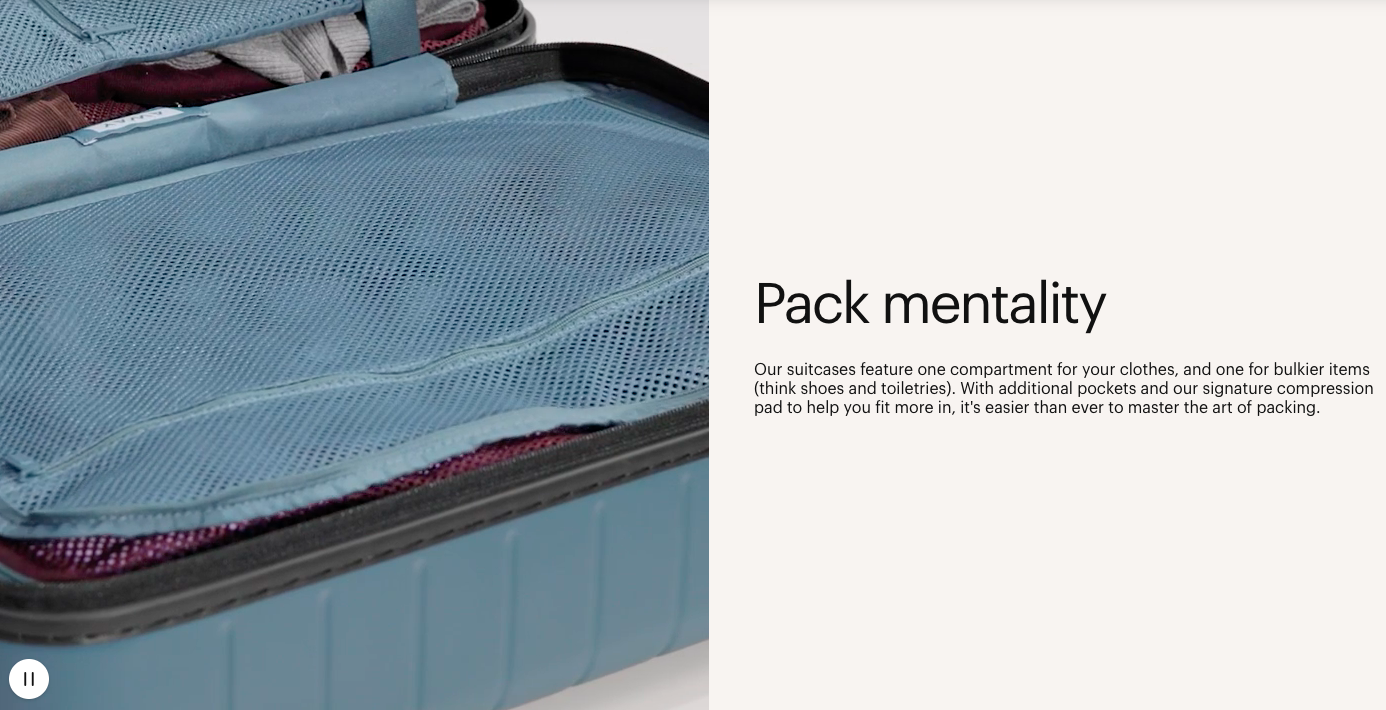
This is a visual SEO strategy that will in fact be a go-to for you if you run a fashion, beauty, furniture or electronics store.
Since catalogs end up being image-heavy in these niches, there are greater chances of images hiding under JavaScript files, pop-ups and even lazy-loading.
The moment you introduce an image sitemap, you help visual search engines pick up on relevant structured image data — and this in turn leads to them picking up more product relevance.
👉 Go beyond the core <loc> tag: for <image:title>, use titles that combine keywords and benefits, for <image:caption>, feature microcopy that talks about use cases and include <image:geo_location> if your brand is high on local SEO.
👉 Introduce a mix of variants & angles per product: a combination of lifestyle shots, close-ups as well as separate galleries for each variant ensures a higher probability of matching since shoppers upload partial and angled photos.
Considering Google Lens is one of the biggest gateways to product discovery on mobile, this is an essential visual SEO move for conversions.
The main reason behind this is that shoppers who use Google Lens often have a higher intent to purchase than others.
👉 Always make space for one “clear cut” hero image: and that holds true even if you have multiple lifestyle context shots — a hero image with a clean label, cut, ingredients, shape will ensure great indexing.
👉 Take close-ups of key differentiators: be it the nutrition label, stitches, logo, zippers, combining parts that make the product etc.
Fashion brand ensures only hi-res images make it to their store, increasing the chances of Google Lens discoverability — a case in point is the following, where Google Lens throws up the top three results of the same dress but from different stores:
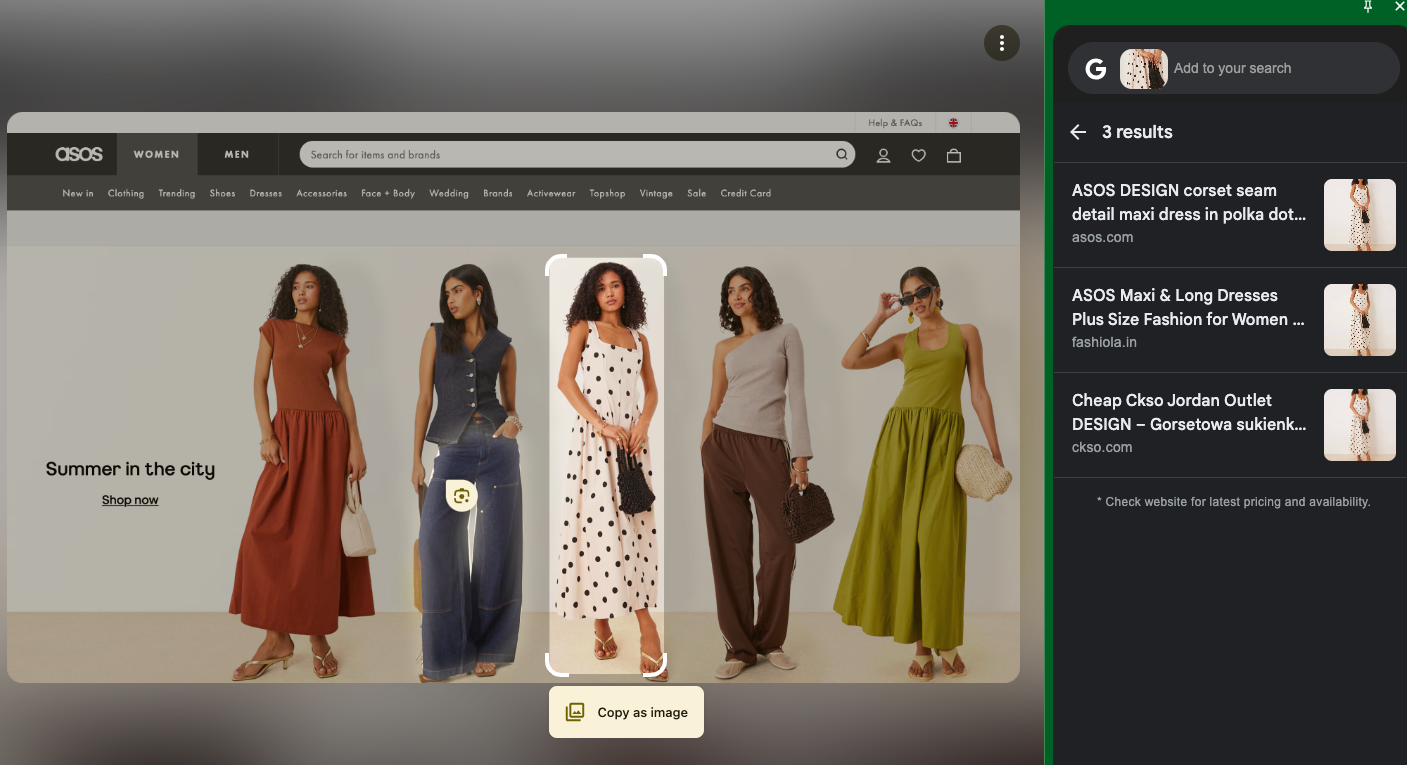
The other time we were auditing a nutrition store, and the founder remarked, “Adding alt tags has got to be art.”
We wouldn’t disagree at all because as far as eCommerce visual SEO is concerned, alt tags decide pretty much how visible your product listings will be.
👉 Start your alt text by describing what the product actually does: image-reading bots love it when they understand how a product will be in use, so if you’re tempted to use "red leather handbag women designer luxury,” please instead use, "woman carrying red leather crossbody handbag with gold hardware during evening out.”
👉 Frame the tag around descriptive elements more than keywords: the idea is to pepper the tag with exact product details but frame them as descriptions that shoppers will actually be interested in considering before a purchase — something like "Model wearing size medium navy blue organic cotton t-shirt with crew neckline in natural lighting" if you run a clothing business.
👉 Make context-specific adjustments: put simply, weave a story within the tag that serves multiple intents — for example, a tag like "Athletic woman using resistance bands for home workout in living room, demonstrating bicep curl exercise" is going to serve the intent of finding a lifestyle solution as well as the intent of those looking for a specific product.
Move over internal text linking, because in 2025, eCommerce visual search is equally or more dependent on image interlinking.
When an eComm store resorts to image linking, it makes way for both humans and bots to understand their product ecosystem better — thanks to the images working as navigational anchors.
👉 Linked product hotspots on “Shop the Look” recommendations: lifestyle images are ideal for this, letting shoppers go directly to the associated product pages through the linked hotspots.
👉 Use image galleries to cross-link: in a product gallery, insert thumbnail images that link to other variants or similar products — for example, when a red dress product page includes “similar in blue” or “similar in velvet” variants, Google sees this as interlinked topical clusters, enhancing search visibility.
👉 Embed hi-res product images in blogs that link back to product pages: this has an immediate impact on how Google reads into intent and context alignment, leading to better indexing.
eCommerce brand InnBeauty Project visually includes similar products in their image galleries to serve both human shopping intent and bot indexing intent, creating context & relevance:
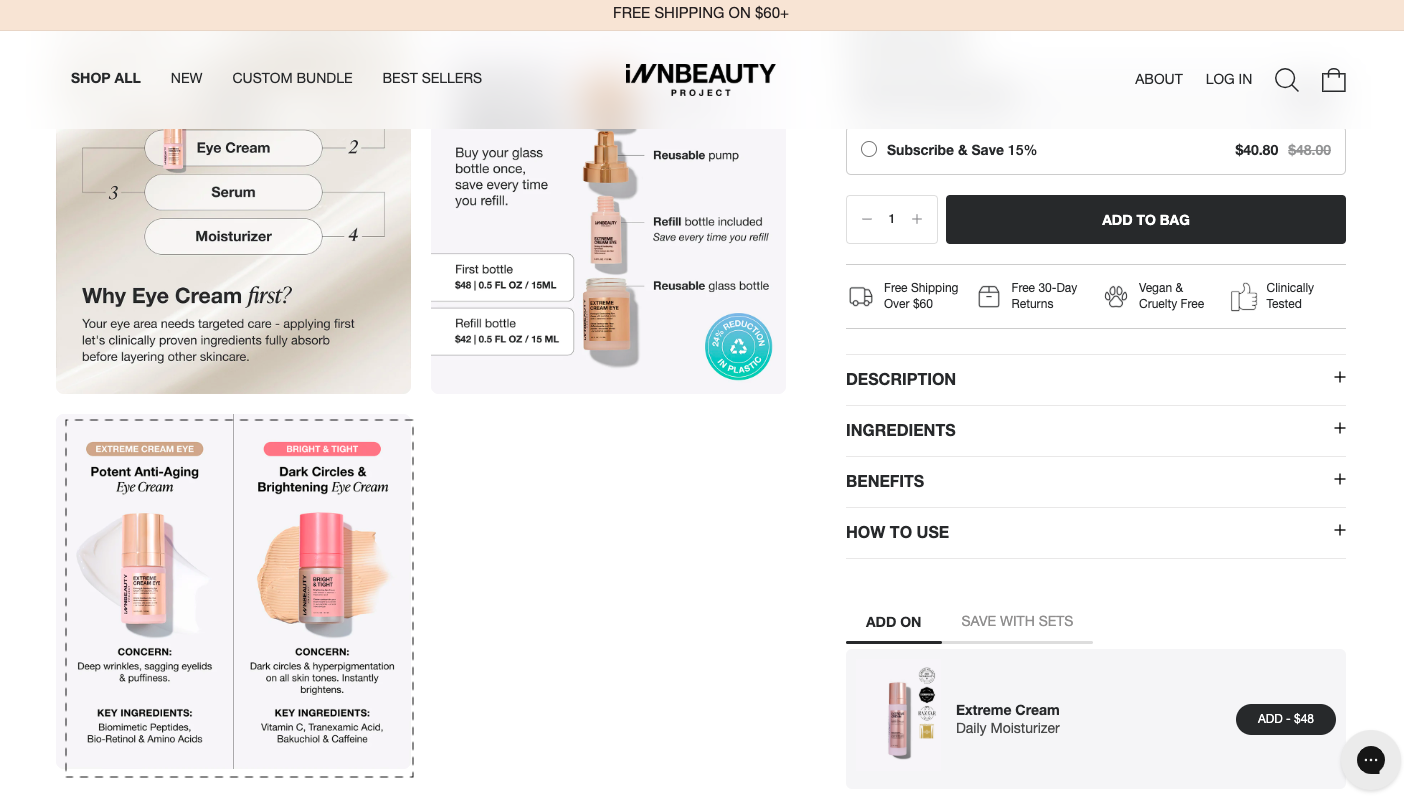
Let’s just put it this way: Google’s crawler bots love authoritative assets.
So when they detect signals of visual imagery being used consistently across the site and across ad assets, they prioritize the brand more as far as search rankings go.
👉 A/B test ad visuals: test color variations, lifestyle vs. product-only, zoomed vs. flat-lay)and feed back the winning formats into your product pages - this also helps unify creative assets across paid & organic formats.
👉 Prevent ranking dilution by adding structured data: by marking images up with ImageObject or Product schema, you help Google link the same visual across ads, PDPs, and shopping feeds - this makes sure Google doesn't end up treating these items as separate assets, which could potentially affect rankings.
Further Reading: Convert More Paid Traffic—9 Strategies That Always Work (eCommerce)
This is an image SEO tactic that can especially come in handy if you have a massive catalog to offer to shoppers.
This can also be helpful for stores that have unique, handcrafted or even curated items that can be difficult to put to words.
👉 Incorporate mobile-first visual search integration right away: start with an existing API like Google Vision or Amazon Rekognition instead of spending time building from scratch - additionally, optimize for basic product attributes like color, size, style and category to start with.
👉 Optimize product images for AI recognition: pay attention to background, lighting and focus, and along with that, to descriptive alt text that includes specific attributes (material, color, style, brand) since AI systems use this data for training and matching.
Third-party marketplace Etsy uses this image SEO strategy to offer “Suggested Tags”, which are AI-generated through a deep analysis of product photos:
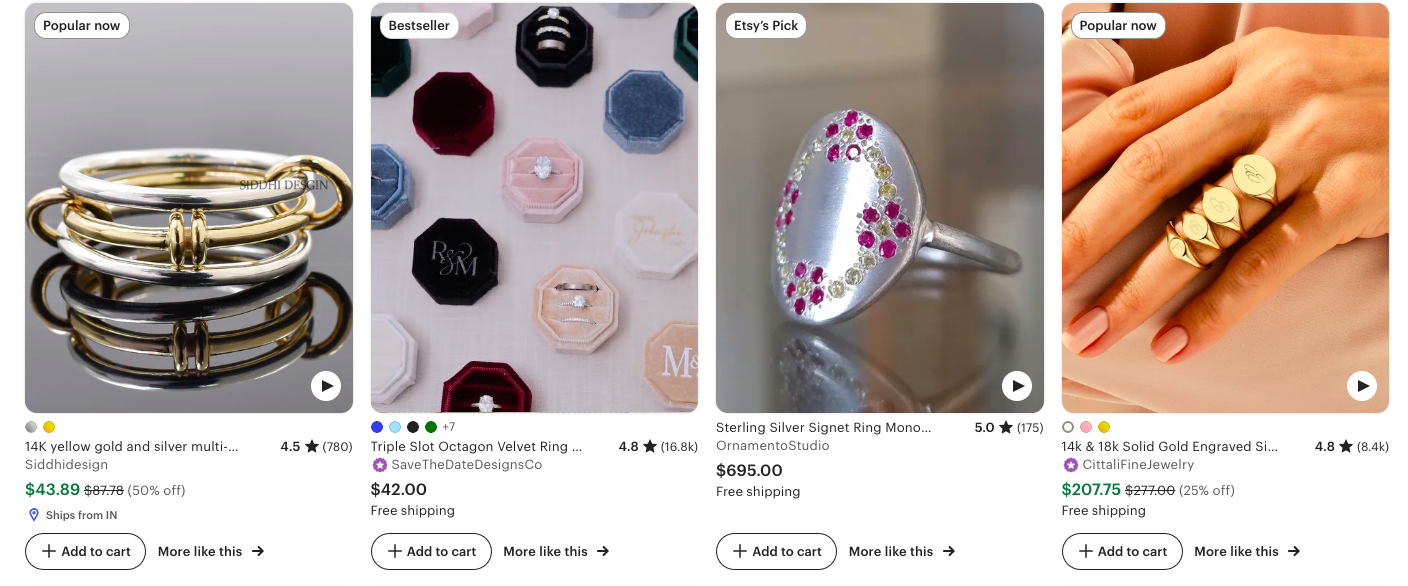
Further Reading: 20 Tasks eCommerce Founders Should Delegate to AI
Given we were just talking about Etsy in the earlier example, there’s research that now proves that virtual try-on can boost sales up to 300%, raise the add-to-cart rate up to 20.15%, and decrease product returns by up to 60%.
This is straight from the horse’s mouth, we mean research on Etsy products — quite understandable when you see the connection between great UX and the signals it sends to search engines on content quality.
👉 Leverage social sharing to generate backlinks: add "Share Your Look" buttons with pre-populated hashtags and product links - in addition to this, also create unique URLs for each virtual try-on session that can be shared and indexed.
👉 Enhance this feature through separate landing pages: consider creating themed landing pages that highlight virtual-try on even if the feature is present on product pages - this can also help you set up ads when you want to attract high-intent buyers, especially with categorization like "See Yourself in Designer Dresses" or "Try Before You Buy: Athletic Wear".
Warby Parker is anyway known for their virtual try-on feature, and to enhance the image SEO around products that they offer for home try-on, they actually have a separate landing page. They even use this page to list out home-try on favorites, which further enables high-intent search traffic to find the store online:
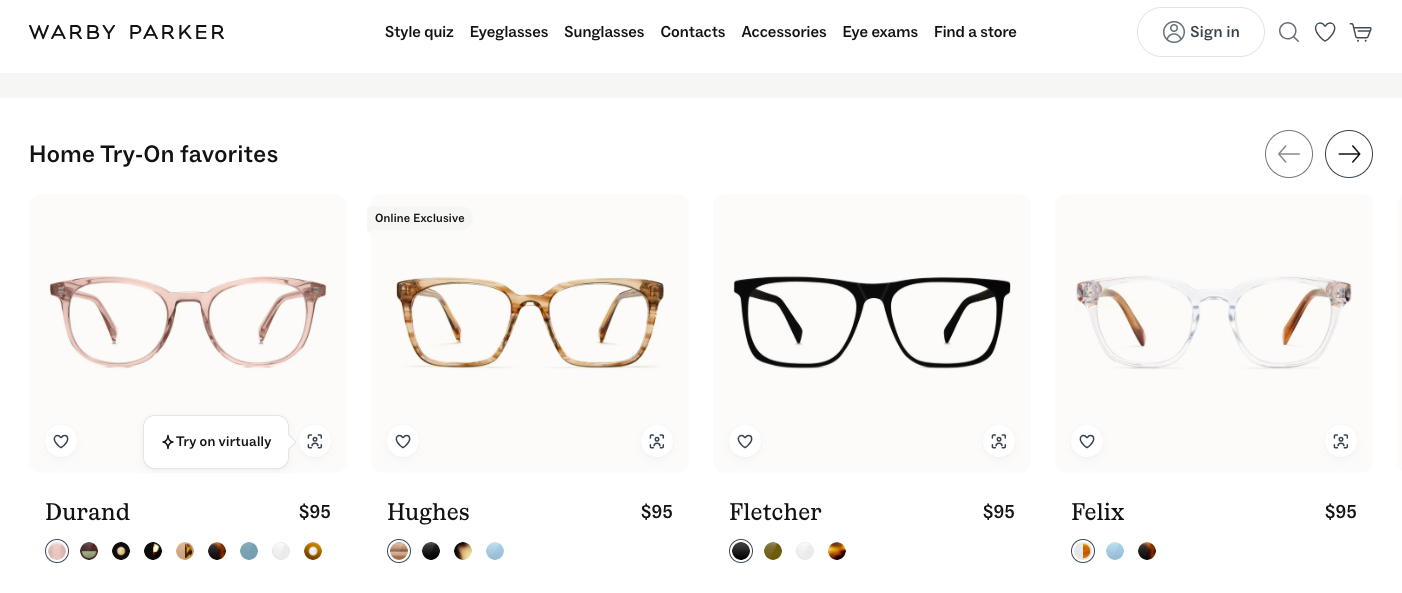
Search engines make your eComm store more findable by indexing the most important visual elements.
In fact, as a rule of thumb, on any given page, bots try to find the “primary image” — and this is why images that are lined up within the first scroll have more importance than what comes later.
👉 Primary image = product-only: use a white-background shot for the primary visual and reserve context, lifestyle and uses for images that come later.
👉 Distribute alt text strategically across images: the main image gets the most keyword‑optimized alt text (product name + key attributes) - secondary attributes can come in the later images.
👉 Enhance storytelling through a “visual flow”: both within the product image gallery as well as across the page, the micro and macro build-up of context is what helps search engines pick info for rich snippets.
IKEA is well-known for getting the visual hierarchy right across product pages, which includes showing the images of accessories related to the main product before showing similar product suggestions:
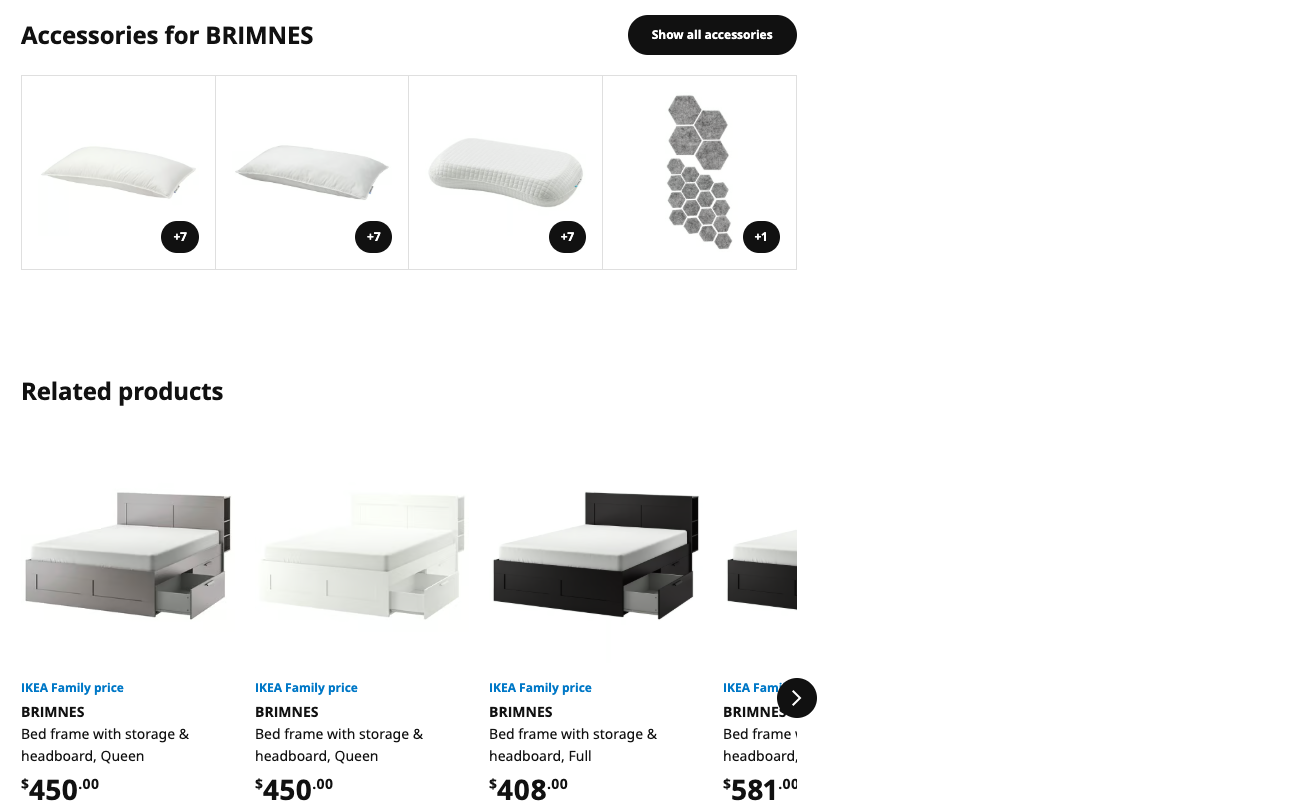
Given that 80% of shoppers discover products through images and not words, your clear shot at a powerful visual search strategy for 2025 should include Pinterest (and optimizing for Pinterest Lens).
The main reason behind this is anyone who is running a visual search on Pinterest usually comes with high buying intent — and is “pinning” for later consideration.
👉 Post two pins per product: a combination of one clean product shot and one styled lifestyle context image is ideal, as this gives the platform more opportunities to pick your pins as visual matches.
👉 Be super clear with alt text: apart from descriptive file names, ensure your pin metadata is enriched and easily conveys the product USP (A cotton throw pillow in terracotta and ivory with handwoven texture. Perfect for neutral décor.)
Jewelry brand Mejuri is known to use this strategy through their “idea pins,” by featuring high-quality, stylized imagery organized according to styling themes. This improves discoverability via Pinterest's visual search algorithm.
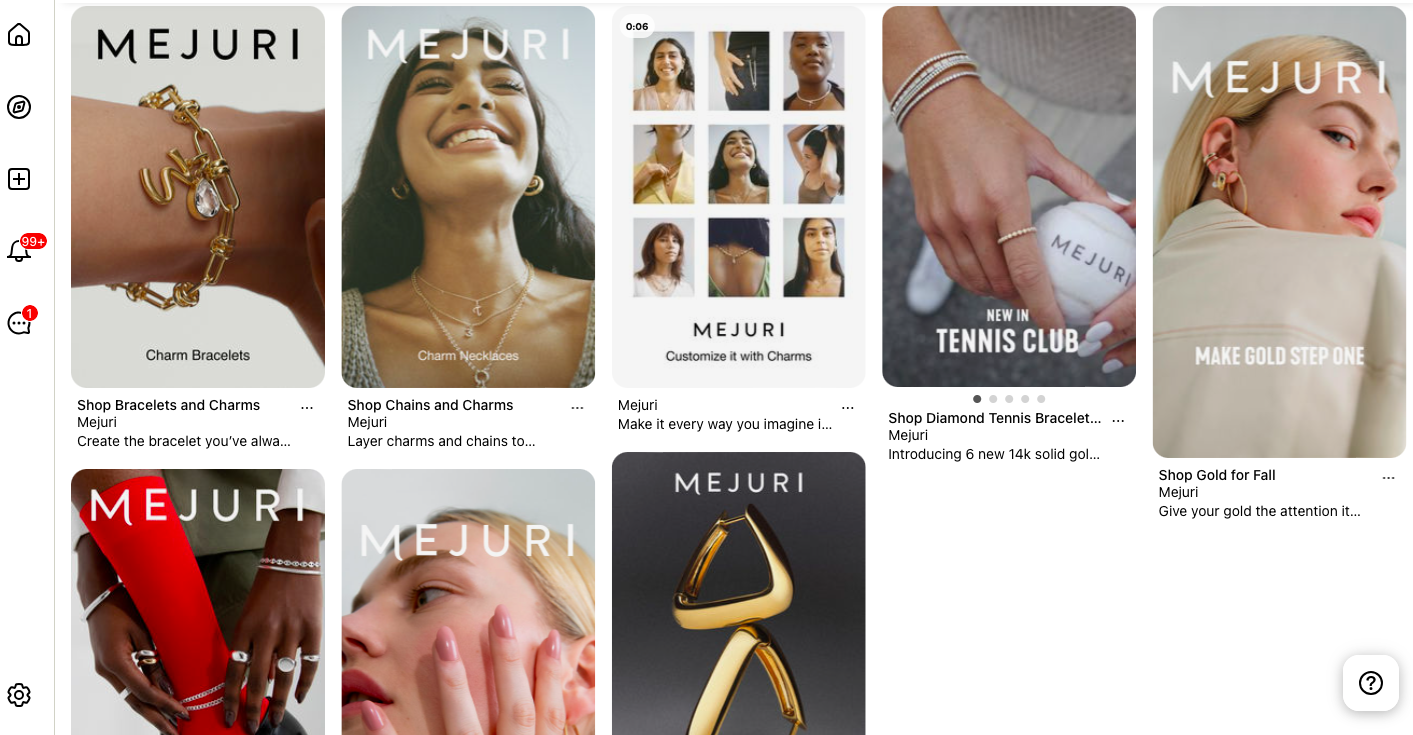
If you’ve been wondering how Google Image Search actually works from indexing to conversions, here’s a quick map:
👉 Crawling & indexing: bots use alt text, filenames, structured data (like schema.org/imageObject), sitemaps, and surrounding page content to understand what each image depicts.
👉 Assessing visual content: Google applies AI-powered computer vision to recognize shapes, colors, logos, and objects in images - this helps it understand whether a photo is a shoe, chair, or skincare product, even without perfect metadata.
👉 Ranking the visuals: Google uses a mix of the following factors to rank product images
👉 Displaying the images in searches: Google then decides based on the image data whether to feature the image across search results, Google Shopping tab (if feed data is available via Merchant Center) or Lens or Discover (if image recognition suggests it’s a shoppable product).
👉 Increasing conversion opportunities through rich snippets: if the brand uses structured data (price, availability, reviews), Google can display rich product snippets directly under images.
Google’s algorithms create a digital "fingerprint" or signature of the image a shopper uploads to capture its essential visual characteristics.
Google then compares this fingerprint against billions of images in its search index. The system looks for images with similar visual signatures, even if they're not identical matches.
The search engine can fetch “similar” image content based on similarity and relevance:
On-page SEO, when optimally done, signals to Google’s algorithms that a page’s images are relevant to the content and context on that page.
While Google's computer vision has improved dramatically, it still depends on on-page SEO elements to understand what images contain and when they should be shown to users.
And this is why the following on-page SEO elements ensure image searchers find the most relevant results on Google:
Descriptive alt text: Well-written alt text that naturally includes relevant keywords can significantly improve image search visibility.
Descriptive file names: Like "red-running-shoes.jpg" instead of "IMG_1234.jpg" gives Google immediate context about the image content before it even processes the visual elements.
Surrounding content & context: The text content around images, including captions, headings, and nearby paragraphs, provides valuable context that helps Google understand the image's relevance to specific topics and search queries.
Topical relevance of a page: Images on pages that are topically relevant and well-optimized for specific keywords are more likely to rank in image search for related terms.
Structured markup: Implementing structured markup (like Schema.org) can help Google better understand your images and potentially display them in rich results.
Technical Optimization: Fast-loading images, proper sizing, and mobile-friendly implementations improve user experience signals that can positively impact image search rankings.
Recommended reading: 20 Mobile eCommerce SEO Strategies to Implement Today
Since one of the quickest ways to convert is to rank higher on Google, optimizing your store to appear on Google Images is an equally good idea.
👉 Focus on implementing fast-loading & responsive images: Use WebP or AVIF formats for crisp visuals with smaller file sizes. Implement responsive images (srcset in HTML) so that users on mobile, tablet, and desktop see optimized sizes.
👉 Include multiple image variants in the sitemap: Pair high-quality lifestyle photos with product-only images. While lifestyle photos rank for discovery queries (“summer outfit ideas”), clean product shots work for transactional searches.
👉 Use descriptive, keyword-rich file names: An example would be black-leather-handbag.jpg instead of IMG123.jpg
👉 Create microcopy context & captions around images: This is super critical because such context-setting actually increases confirmation on what the image already represents. Optimize this by adding keywords (material, color, season, sizing) that Google connects with search queries.
👉 Add structured data for all purchasable product images: Without schema, Google sees an image but doesn’t always know it’s a product for sale. With Product + ImageObject, Google can link the image to a buying opportunity, boosting chances of appearing in rich results.
And just as you were about to think sharpening your images will get the conversions reeling, here's something we need to tell you.
98% of visitors who visit an eCommerce site—drop off without buying anything.
Why: user experience issues that cause friction for visitors.
And this is the problem Convertcart solves.
We've helped 500+ eCommerce stores (in the US) improve user experience—and 2X their conversions.
How we can help you:
Our conversion experts can audit your site—identify UX issues, and suggest changes to improve conversions.